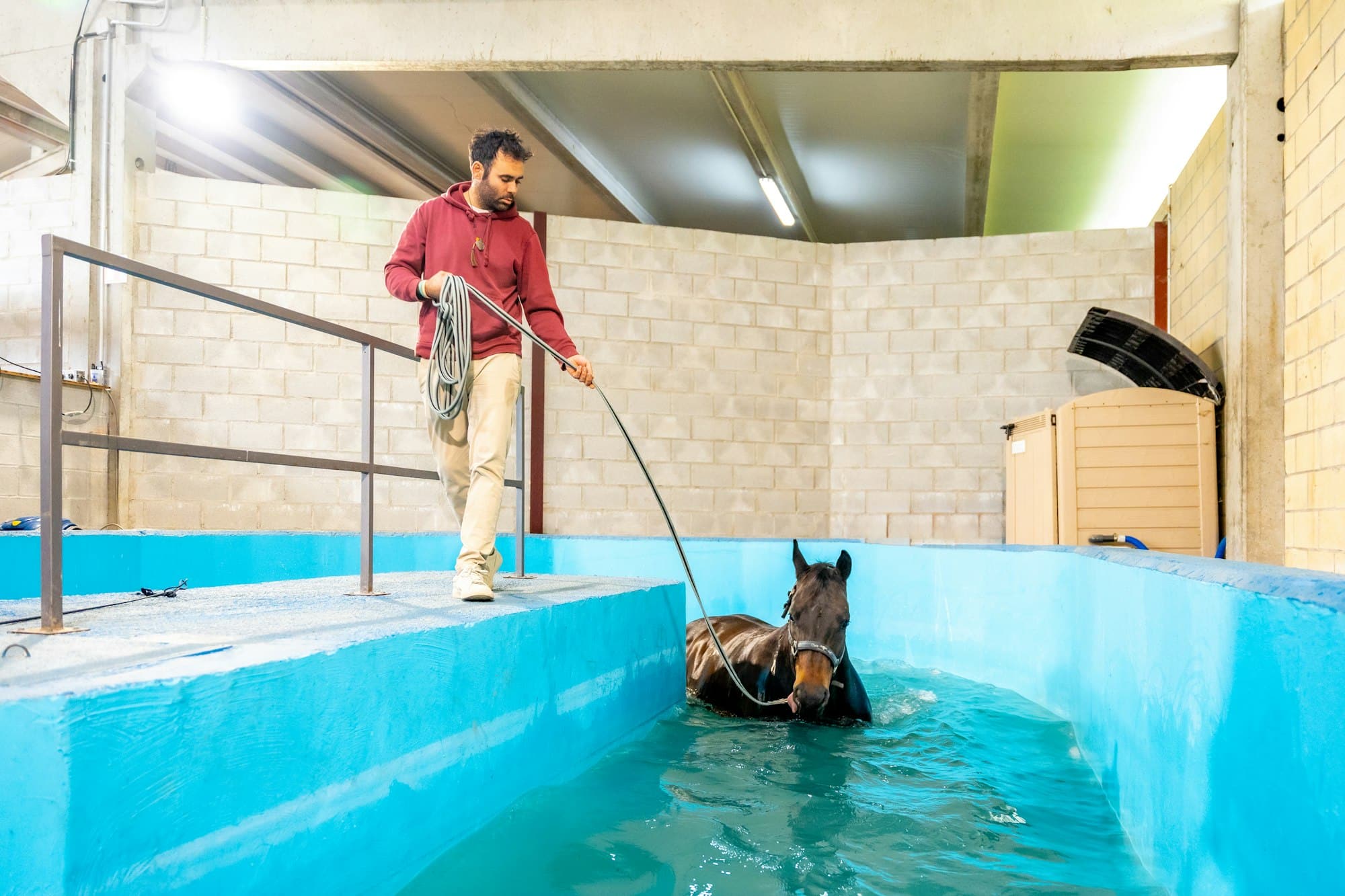How to Implement a Safe Water Exercise Program for Dogs with Hip Dysplasia?

As pet parents, it's naturally distressing to see our furry companions in pain or discomfort. Canine hip dysplasia is a prevalent joint disorder that often induces pain and reduces mobility. However, we need not lose hope. There are proven methods to alleviate the impact of this condition and improve their quality of life. One such therapeutic approach is hydrotherapy or water therapy. This article will guide you on how to design and implement a safe water exercise program for dogs suffering from hip dysplasia.
Understanding Hip Dysplasia in Dogs
Firstly, let's delve into understanding what hip dysplasia is in dogs. It's a hereditary condition where the ball and socket of the hip joint don't fit together correctly. This malformation eventually leads to arthritis, causing discomfort and limiting movement.
A voir aussi : Can Dogs Benefit from Listening to Classical Music During Thunderstorms?
Hydrotherapy comes in as an ideal solution to help dogs with this condition. By their natural disposition, dogs generally love water. Making use of this affinity, hydrotherapy takes advantage of the properties of water to provide gentle resistance and buoyancy that helps reduce joint stress and enhances muscle strength and endurance.
The Role of Water Therapy in Canine Hip Dysplasia
Now, how does hydrotherapy work to aid dogs with hip dysplasia? Water therapy is a low-impact exercise that is perfect for dogs with joint issues. The buoyancy of the water helps to support the weight of the dog, which reduces stress on the joints. This will significantly help to improve the condition of dogs with hip dysplasia.
A lire aussi : What's the Ideal Setup for a Hedgehog's Cage to Encourage Natural Foraging Behaviors?
Additionally, the resistance offered by water makes the dog work harder to move, thus strengthening its muscles. This muscle conditioning could assist in supporting problematic joints and decrease pain levels in your furry friend.
Designing a Suitable Water Exercise Program
When designing a water exercise program for a dog with hip dysplasia, several factors should be considered. The program should ideally start with gentle exercises and gradually progress to more challenging ones as the dog's muscle strength and joint flexibility improve.
Before starting the program, it's crucial to consult with a professional animal physiotherapist or a veterinarian. They can assess the severity of hip dysplasia and recommend a suitable set of exercises.
The water temperature should be warm - not too hot or too cold, to provide a relaxing environment and help in easing muscle stiffness.
The depth of water should be such that it allows the dog to stand on its hind legs with its head above water. This position ensures that maximum weight is removed from the dog's hips and joints, allowing comfortable movement.
Safe Implementation of the Water Exercise Program
After designing a suitable program, the next step is its safe implementation. It's essential to introduce your dog to water and swimming gradually, especially if they're not used to it.
You can use toys or treats to make the exercise sessions enjoyable. However, never force your dog into the water. The goal is to make water therapy a positive and fun experience for your pet, not a terrifying one.
Also, it's crucial to closely monitor your dog during exercise sessions. If your dog shows signs of distress or discomfort, such as excessive panting, lethargy, or reluctance to continue the exercise, it's best to end the session and consult your veterinarian.
Monitoring and Adjusting the Program
The final aspect of implementing a water exercise program for dogs with hip dysplasia is monitoring their progress and making necessary adjustments.
Regular check-ups with the veterinarian or physiotherapist will help assess the effectiveness of the program. They can evaluate the changes in your dog's condition and suggest modifications, if necessary.
Remember, every dog is unique. What works for one might not work for another. Therefore, it's vital to customize the exercise program to suit your dog's specific needs and capabilities.
In sum, water therapy can be a beneficial tool in managing hip dysplasia in dogs. It provides a safe, enjoyable, and effective way to improve muscle strength, enhance joint flexibility, and alleviate pain. With appropriate design, implementation, and monitoring, a water exercise program can significantly contribute to your pet's overall well-being and quality of life.
The Benefits and Tools of Hydrotherapy for Dogs with Hip Dysplasia
Understanding the benefits of hydrotherapy for dogs with hip dysplasia is crucial in creating a successful water exercise program. As previously mentioned, the low-impact nature of water exercises reduces stress on the joints, making it a perfect therapy for dogs with hip dysplasia.
Hydrotherapy can improve a dog's range of motion, encourage the building of muscle mass, and promote overall health and wellness. The warm water eases muscle stiffness and promotes relaxation, while the resistance promotes muscle strength and endurance.
Besides using natural bodies of water, an underwater treadmill is a tool often used in canine hydrotherapy sessions. The treadmill allows your dog to walk or run while being partially submerged in water. This tool is great for controlled, gradual progression in the therapy sessions, as speed and water level can be adjusted to match your dog's capabilities and improvements.
The benefits of hydrotherapy extend beyond physical improvements. Many dogs enjoy water exercises, which can contribute to a better mood and improved quality of life. Moreover, consistent exercise can help dogs maintain a healthy weight, which is particularly important for dogs with arthritis due to hip dysplasia, as excess weight can put additional stress on the joints.
Conclusion: The Impact of a Safe Water Exercise Program on Dogs with Hip Dysplasia
Implementing a water exercise program for your dog with hip dysplasia can have a significant impact on their health and happiness. Hydrotherapy for dogs is a beneficial, low-impact exercise that can significantly improve a dog's muscle strength and range of motion, alleviating discomfort associated with hip dysplasia and potentially enhancing their quality of life.
The process of creating and implementing a safe water exercise program requires careful planning and consulting with a veterinarian or professional animal physiotherapist. Remember to ensure your dog's comfort and safety during hydrotherapy sessions. Make the experience positive and enjoyable for them, monitoring their reactions and adjusting the program as needed.
In conclusion, a well-designed, enjoyable, and carefully monitored water exercise program can help dogs with hip dysplasia to live a less painful, more active life. It's our responsibility as loving pet owners to explore such therapeutic options that can alleviate their discomfort and improve their quality of life. With the right approach, hydrotherapy can be a powerful tool in managing hip dysplasia in dogs.
